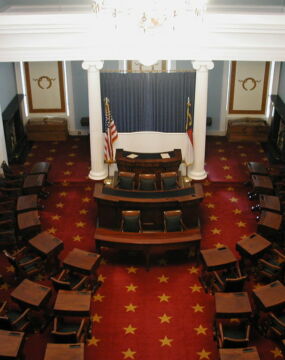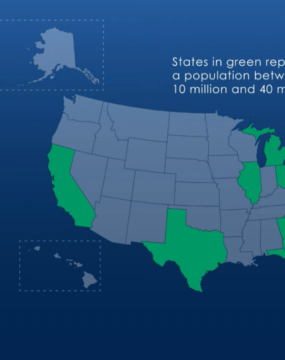Posts written by Rebecca Tippett
Keep up with our latest demographic insights

This is the third post in a three-part series previewing redistricting in North Carolina. Earlier posts provide an overview of redistricting and a preview of what redistricting means for NC's House. Typically, redistricting starts in April, but the data delays because of Covid-19 pushed back the redistricting data release to August. Redistricting data from the 2020 census will be released on Aug. 12 at 1 p.m. ET. The redistricting files are expected to be uploaded…

This is the second post in a three-part series previewing redistricting in North Carolina. Other posts provide an overview of redistricting and a preview of what redistricting means for NC's Senate. Typically, redistricting starts in April, but the data delays because of Covid-19 pushed back the redistricting data release to August. Redistricting data from the 2020 census will be released on Aug. 12 at 1 p.m. ET. The redistricting files are expected to be uploaded…

This is the first post in a three-part series previewing redistricting in North Carolina. Other posts preview what redistricting means for NC's House and what redistricting means for NC's Senate. Shortly after the new population numbers come out from the Census, states redraw their legislative district boundaries. This once-a-decade process – called redistricting – ensures that voting districts across the country have an equal number of people in them, to comply with the principle of…

The majority of North Carolina’s growth over the past few decades has been from net migration, meaning more people moved here than moved away. Recent population estimates from the U.S. Census Bureau indicated that about 70% of North Carolina’s estimated growth between April 1, 2010 and July 1, 2020, came from net migration. The other 30% of our state’s growth came from natural increase, meaning more births than deaths took place in our state. Where…

Early in the pandemic, many joked about the potential for enforced proximity in March to yield a baby boom later in the year. (Many others, including most demographers, suggested otherwise.) With preliminary data for 2020 births now in, there is clear evidence of a Covid-19 baby bust. Nationally, births declined 3.8 percent in 2020 compared with 2019, with faster declines occurring at the end of the year (November and December), when the first full impacts…

We publish an annual post with statistics about North Carolina’s veteran population. The most current version of that profile was published in November 2020. The profile contains the following information: Age of veterans vs. non-veterans Race & ethnicity of veterans vs. non-veterans Period of military service Labor force participation, income, and poverty of veterans vs. non-veterans Educational attainment of veterans vs. non-veterans In addition to this, we regularly answer questions about veterans in North Carolina…

The U.S. Census Bureau just released the first look at the results from the 2020 Census. The U.S. population is now 331,449,281. The nation grew by 22,703,743 or 7.4% since 2010. This represents the second slowest decade of growth on record, just after 1930 to 1940 when the nation grew by 7.3%. Utah (+18.4%) was the fastest-growing state, followed by Idaho (17.3%) and Texas (15.9%). Three states--West Virginia (-3.2%), Mississippi (-0.2%), Illinois (-0.1%)--and Puerto Rico…

A poll released last month by the Kaiser Family Foundation indicated that a growing number of people in the United States indicate that they have or will receive at least one dose of a COVID-19 vaccine. But there are still many people who are hesitant to get the vaccine. The CDC recently released an interactive map estimating how hesitant areas are across the United States to receive the vaccine. The map estimates the population that…

On March 15, 2021, Stacey Carless, the Executive Director of the NC Counts Coalition, and I presented at the 2021 Rural Summit. We provided a detailed look into trends impacting North Carolina, an overview of the 2020 Census and redistricting, and highlighted how to use census and census-derived data in community planning. You can download a pdf of our presentation. During the Q&A session, we were asked questions about the Census and demographic data. The…

The following post is an email message we received from Bob Coats, Governor's Census Liaison at the North Carolina Office of State Budget and Management, regarding the proposed changes to address how urban areas will be identified after the 2020 Census data are released and how metropolitan statistical areas will be defined. This email has been lightly edited and posted here with his approval. You can read what the recommendations are and how this will…
Your support is critical to our mission of measuring, understanding, and predicting population change and its impact. Donate to Carolina Demography today.